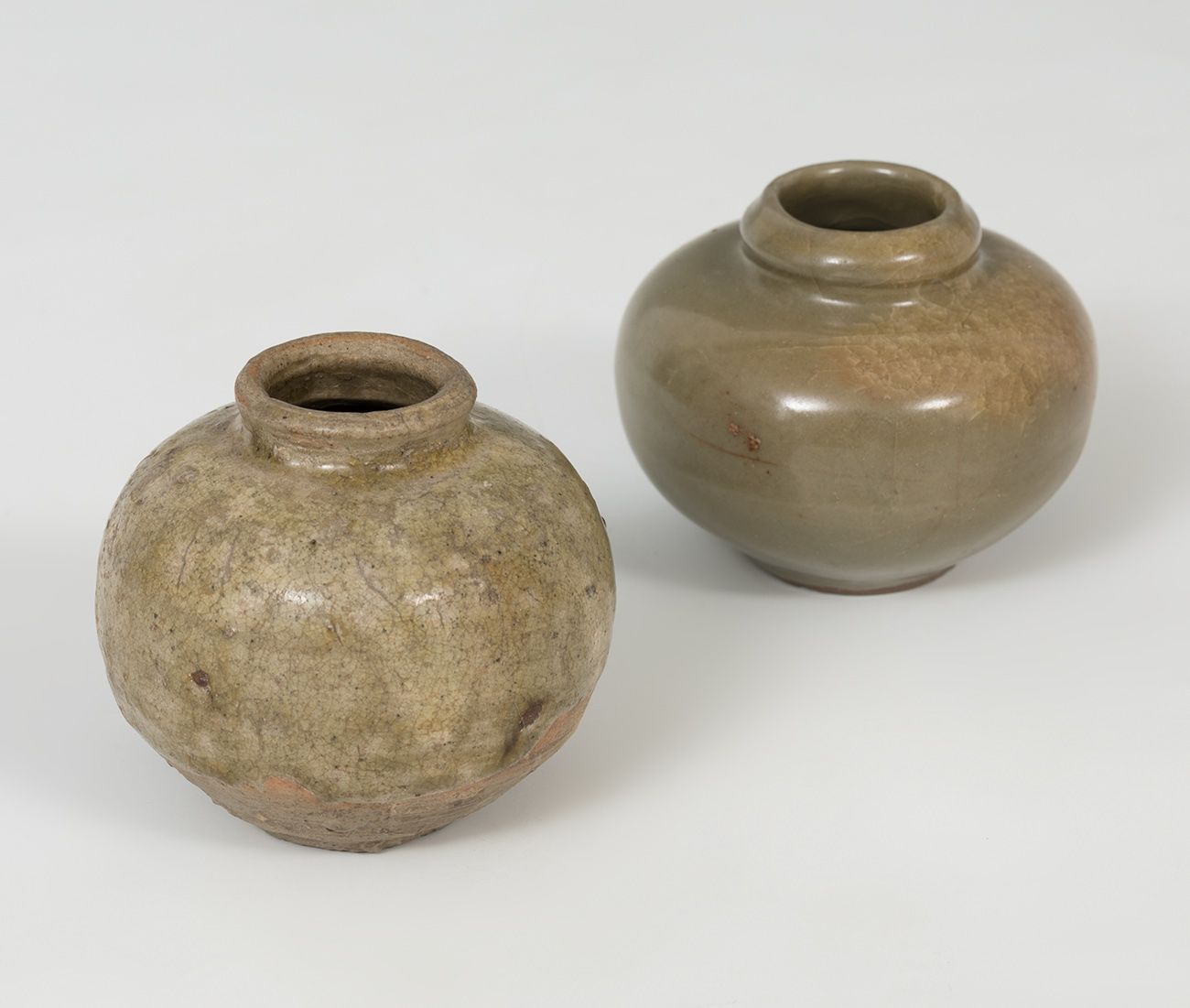Description
Two vessels; China, Quing Dynasty, 1644- 1911. Celadon ceramic. Size: 6 x 6.5 cm; 6 x 5.5 cm. Pair of water vessels with the same shape, with a round base and mouth and a globular body. Despite their similarity, the two pieces differ in size. The celando is very popular in Asia, as it allows the colour of jade, the sacred stone, to be obtained. Chinese craftsmen reproduced the ancient bronzes, so they abandoned the ochre colour for a creamy green that magnifies their masterpieces, the famous colour now associated with the name celadon. The golden age of celadon extended from the 11th to the 14th century in China during the Song and Yuan dynasties, the former ruling China from 960 to 1279. The artistic classicism of the Song dynasty embraced all means of expression and the pieces that were made were more for the enjoyment of contemplation than for use. Celadon wares are generally monochrome, sometimes devoid of ornamentation, and often decorated with simple, finely raised motifs in relief, with lobed lips or simply with a larger outward opening that give the wares an added elegance to the chromatic monotony of the single colour.
88
Two vessels; China, Quing Dynasty, 1644- 1911. Celadon ceramic. Size: 6 x 6.5 cm; 6 x 5.5 cm. Pair of water vessels with the same shape, with a round base and mouth and a globular body. Despite their similarity, the two pieces differ in size. The celando is very popular in Asia, as it allows the colour of jade, the sacred stone, to be obtained. Chinese craftsmen reproduced the ancient bronzes, so they abandoned the ochre colour for a creamy green that magnifies their masterpieces, the famous colour now associated with the name celadon. The golden age of celadon extended from the 11th to the 14th century in China during the Song and Yuan dynasties, the former ruling China from 960 to 1279. The artistic classicism of the Song dynasty embraced all means of expression and the pieces that were made were more for the enjoyment of contemplation than for use. Celadon wares are generally monochrome, sometimes devoid of ornamentation, and often decorated with simple, finely raised motifs in relief, with lobed lips or simply with a larger outward opening that give the wares an added elegance to the chromatic monotony of the single colour.
